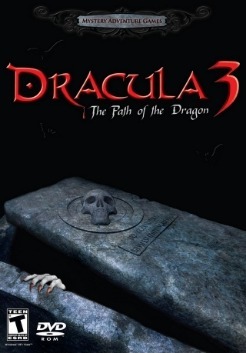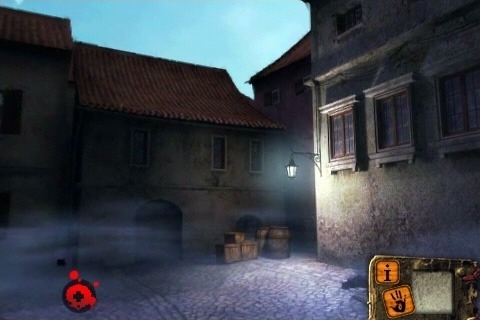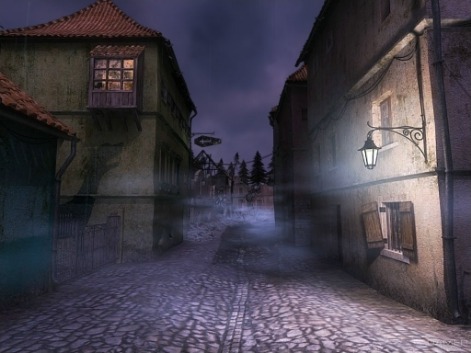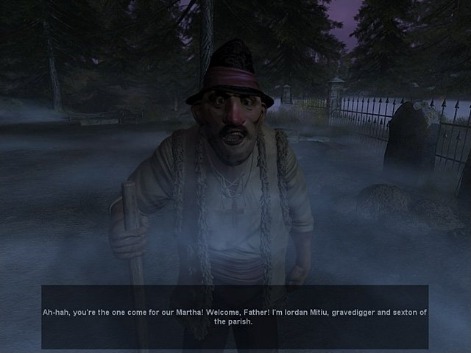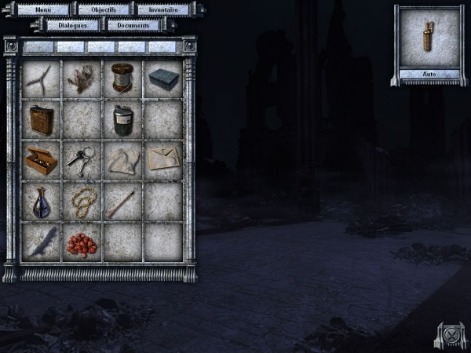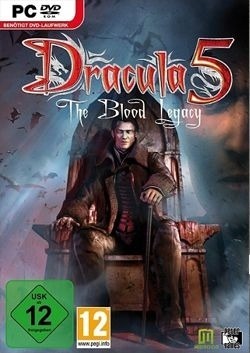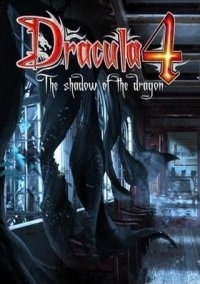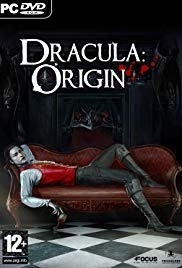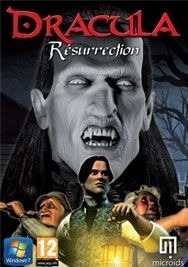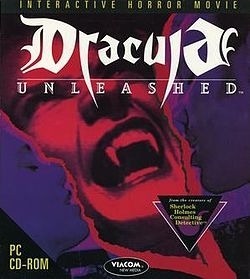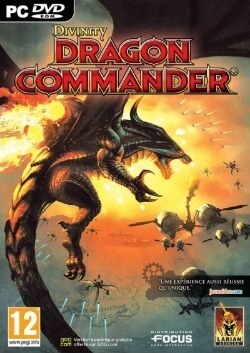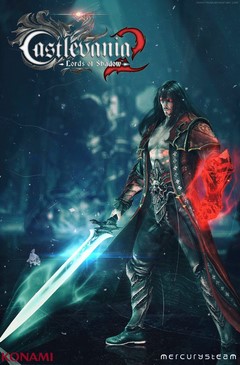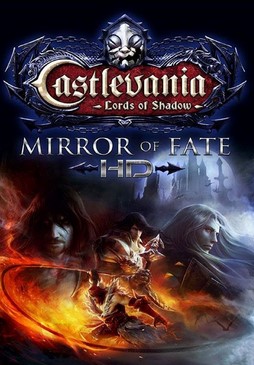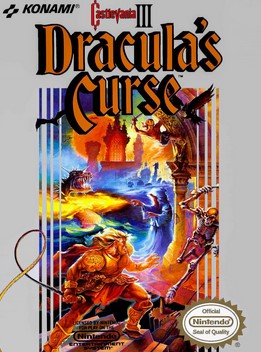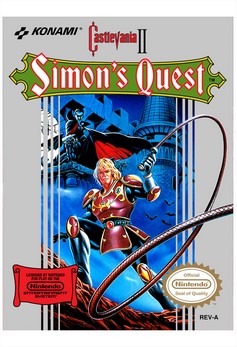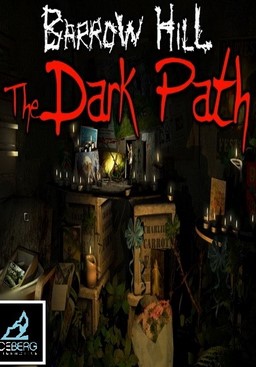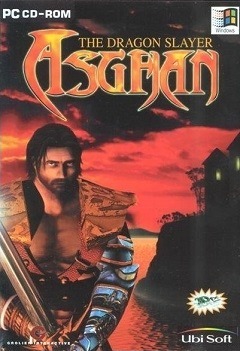The game uses a basic point-and-click interface to move the player around and manipulate the game world. Within each screen, the player is free to look around 360 degrees. As the player moves the cursor around the screen it can change into different styles depending on the situation; neutral cursor (no interaction is possible), an arrow (the player can move in the direction indicated), a mouth (the player can speak to the character over whom the option appears), an eye (an area or object can be examined in more detail), a magnifying glass (an object contains important information which needs closer examination), a hand (the player can take the object), a cog (the player must use an inventory item to initiate interaction with the object), a cog with red line (the player is attempting to use the wrong inventory item to initiate interaction), a left-right horizontal arrow (the object can be moved left and right), an up-down vertical arrow (the object can be moved up and down), a circular arrow (the object can be rotated).
When the player clicks on a person to whom they wish to speak, a list of conversation topics appear on screen. When the player picks up an item, it is automatically put into an auto-holder rather than the main inventory, and must be transferred manually from the auto-holder to the inventory screen. This allows the player to sort the inventory in any way they wish. A major part of the gameplay is examining documents, which have a separate section in the inventory screen, presenting the player with numerous options. For example, the player can organise the documents in two ways; by title or by the order in which they were found. Players can also "flag" documents so as to relate them to particular clues, and can then examine all documents related to any one particular clue together, without having to navigate through non-related documents. The documents screen also includes a "compare" view for examining different copies of the same pictures to find differences between them, and all documents can be examined in more detail with a magnifying glass. The game also includes complete copies of the Bible and Bram Stoker's Dracula, and each text has a "random page" option, which opens the book at a random passage. If done at certain times in the game, the random option can present clues to the player as to how to proceed (when this is the case, the "random page" option flashes).
The 2010 three-part abridged iOS version, which was also released for Windows as the Dracula Series, adds several new features to the game, such as an optional help feature (which highlights interactive zones on each screen), and a "quick inventory" (which allows the player to hold one item and access it without having to enter the inventory screen). This version of the game also removes several of the more difficult puzzles and is shorter than the main version of the game, with several cutscenes and plot points absent.
Plot
The game begins in 1920, with Cardinal Felicio Briganti sending Father Arno Moriani of the Sacred Congregation of Rites to the village of Vladoviste in the diocese of Alba Iula in Transylvania to investigate a candidate for sainthood; Martha Calugarul, a physician and scientist who died several months previously. The process is being fast-tracked because Transylvania has recently been annexed by Romania, leaving Catholics in the minority, and the church feels a local saint may help the Catholics reaffirm their identity in relation to the majority Orthodox in the diocese.
Upon arriving at his inn, Moriani meets Ozana, the innkeeper, and Janos Pekmester, a professor in Medieval History, who is in Vladoviste to excavate the nearby ruins of the Castle of Twilight, Vlad Tepes' residence during his time as Voivode. Moriani learns of Calugarul's biography; after becoming a scientist she was badly burned, forcing her to wear a veil over the side of her face. Later, she worked with Professor Heinrich von Krüger investigating a blood disorder called the "P syndrome". During the War, she remained in Vladoviste and cared for combatants on both sides. She died in bed, apparently from exhaustion, soon after the war.
The next day, Moriani meets a reporter, Stephan Luca, who tells him Calugarul was murdered. He shows Moriani files in which Calugarul reports people dying of unexplainable blood loss, prior to which they were prone to sleepwalking and reacting violently to garlic. All of these patients had two small hematomas on their neck when they died, and all had the "P anomaly" in their blood. Luca claims Calugarul believed a vampire was at work in Vladoviste, and vowed to walk "The Path of the Dragon" to find and confront it. However, because Calugarul believed in vampires and engaged in occult practices to combat them, she cannot be canonized.
Moriani calls Briganti, who tells him to open an investigation proving vampires don't exist. He explains that since the publication of Bram Stoker's Dracula, belief in vampires is at an all-time high, and the Vatican wants to put a stop to this superstition. Moriani calls von Krüger, who claims vampirism is actually a blood disorder called the "P syndrome", and is thus scientifically explainable. He then heads to Budapest to meet Professor Irina Boczow, an expert in vampire lore. She tells him the history of vampirism, beginning with Lilith, and much to Moriani's surprise, reveals she believes vampires to be real. She gives him a book, The Lords of Twilight, published by the Thule Society, which says that to become a vampire one must complete The Path of the Dragon, an initiation ritual, something Tepes did in his youth.
